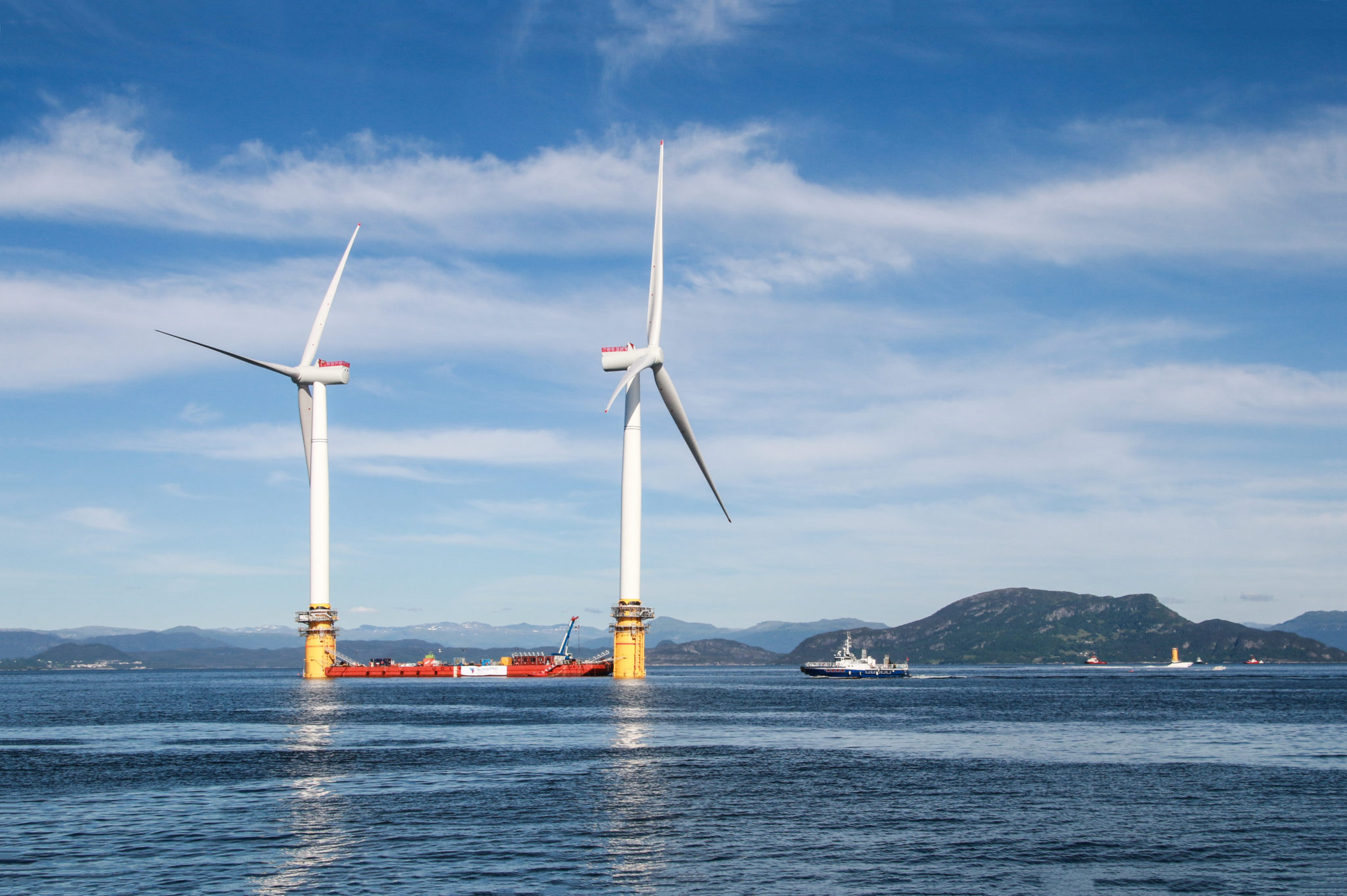The Energy Transition | T-4 capacity market closes at record price
Published on 4th March 2024
Welcome to our top picks of the latest energy regulatory and market developments in the UK's transition to net zero

This week we look at the provisional results from the T-4 capacity market auction, new government investment in hydrogen projects, the national infrastructure commission's review of distribution networks and more.
Capacity Market: T-4 provisional results announced
National Grid Electricity System Operator (ESO) has released the provisional results of the four-year ahead (T-4) Capacity Market auction for the 2027/28 delivery year. The T-4 auction closed on 27 February 2024. The T-4 results follow on from the T-1 Capacity Market auction results which we reported on in the previous edition of the Energy Transition. The T-4 Capacity Market auction secures capacity needed for delivery in four years' time. Both the T-1 and T-4 Capacity Markets are designed to ensure sufficient reliable capacity is available to the grid to prevent the possibility of future blackouts.
In total, this year's T-4 auction secured 42.8GW in capacity agreements which were awarded to 540 capacity market units which is less than ESO's target to procure 44GW of capacity. Provisional results show that gas was the most successful fuel type and interconnectors were most successful technology. These results will remain provisional until 8 working days after completion of the Capacity Market Auction..
A close analysis of ESO's provisional auction report reveals that:
- the clearing price (£65/kW) is double last year's price (which itself was a record high);
- pumped storage secured the most capacity of low-carbon technologies, securing 9GW or 4% of the auction;
- nearly 1GW of new-build battery assets were successful in the auction;
- 98.76% of capacity which entered the auction was awarded an agreement; and
- 90.5% of capacity agreements were awarded to existing assets and interconnectors. Only 3.9% of capacity agreements were awarded to new build generating assets.
UK government allocates further £21m of funding for hydrogen production project
The UK government has awarded £21 million in funding to a series of hydrogen production projects across England, Scotland, and Wales. The aim of the funding is to increase the UK's supply of clean, domestically produced hydrogen fuel for use across transport networks and local businesses.
The funding will support seven projects, including four that will produce hydrogen for various industries such as automotive and pharmaceuticals, and three that will produce and supply hydrogen as a transport fuel. These projects are expected to increase the UK's hydrogen production capacity by 800MW, bringing the government closer to its target of achieving up to 10GW of low carbon hydrogen production capacity by 2030.
In addition to the funding announcement, the government has launched a call for evidence to help design the £960 million Green Industries Growth Accelerator fund. This fund aims to support the expansion of the supply chain for hydrogen, carbon capture, usage and storage (CCUS), engineered greenhouse gas removals, and civil nuclear projects.
The seven projects awarded funding include plans for:
- a hydrogen production and refuelling network in Suffolk;
- a new hydrogen hub in Aberdeen;
- a green hydrogen production facility in Shetland;
- an electrolyser and e-methanol plant in Teesport;
- a green hydrogen electrolyser facility in Pembroke; and
- a 200MW hydrogen electrolyser facility near Liverpool.
Energy Security and Net Zero Secretary, Claire Coutinho, stated that: "The new projects we're funding across the country will boost our supply of clean homegrown energy for use in buses, trains and local businesses… By backing the UK hydrogen industry, we can support over 12,000 jobs and up to £11bn in private investment by 2030."
Scope revealed for major review of distribution networks
The National Infrastructure Commission (NIC) has received the green light from the government to undertake a full review of the electricity distribution network. The review was first announced in the Autumn Statement in November 2023, and the full terms of reference have now been released. The focus of the study is on the developments needed to ensure that local networks facilitate rather than hinder the transition to a net zero electricity system by 2035.
The review has a wide-ranging scope, and will consider the way in which the use of the distribution network will change as new sources of demand, storage and generation are deployed. It will also consider how the relevant regulatory frameworks (including any developments already proposed) must continue to evolve to facilitate the scale of investment required to deliver timely connection of these new assets.
The NIC has also been given remit to review the role of various stakeholders, including the Future System Operator and Distribution Network Operators in the process of connecting new generation, along with the interaction of the distribution network with transmission network capacity. Commissioner for the NIC, Nick Winser, previously published an independent report on transmission network deployment in August of last year.
The review will look at a variety of additional factors, both on and off network, which can contribute to the swift delivery of the required capacity at the lowest cost, including the policy changes that may be required to ensure that this is achievable. One specific area to be considered is whether the UK's planning system requires any changes to support more efficient delivery of distribution infrastructure.
The full report is expected to be published in early 2025.
Nick Winser commented that “looking afresh at how we manage and maintain the whole system will help us better understand where further investment or new policies may be needed to ensure a resilient and flexible electricity network up to 2050 and beyond.”
A government spokesperson expressed the hope that the review will result in a more efficient and targeted evolution in the network, commenting that "the amount of physical capacity needed could be significantly reduced through further application of non-network solutions, such as the use of local flexibility markets, enhanced use of demand side response and improved use of data and digitalisation".
UK's net zero economy sees 9% growth in 2023
A report commissioned by the Energy and Climate Intelligence Unit (ECIU) has revealed that the total gross value (GVA) added by businesses that participate in the net zero economy reached £74 billion in 2023, representing a year-on-year growth of 9%. This GVA also generated further economic benefits - for every £1 million contributed by net zero businesses, nearly £2 million more is added through the supply chain and employee spending. The report describes how jobs within the net zero economy are paid (on average) nearly £10,000 more than other economies, as well as benefiting from higher productivity.
The report broke down the analysis into the different regions of the UK. Scotland, Wales and the Midlands were described as "net zero hotspots" due to the high concentration of regional GVA contributed by the net zero sector in these regions. In Scotland, for example, the net zero economy makes up 5.7% of the country’s GVA. Of these net zero hotspots, 65% were classified as major electoral battlegrounds in the upcoming General Election. It was also noted how a number of the net zero hotspots are amongst the most deprived areas of the UK - net zero hotspots Hartlepool, Nottingham, Redcar and Cleveland are among the top 10% of local authorities for income deprivation in England.
However, analysis of the report by CBI Economics cautions that the UK's future growth in the net zero economy may be challenged as other global players, such as the US and the EU, compete to attract and build their own net zero economies. Future investment and policy stability is therefore required to ensure the UK maintains its strength in this area.
This week's article was written with the assistance of Johnny Hartrick, Jack Duffy, Madeleine Begg and Luke Webb, Trainee Solicitors.




